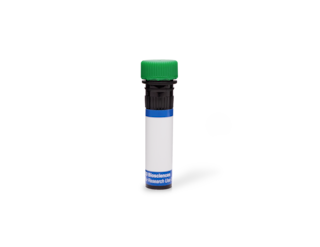-
Reagents
- Flow Cytometry Reagents
-
Western Blotting and Molecular Reagents
- Immunoassay Reagents
-
Single-Cell Multiomics Reagents
- BD® OMICS-Guard Sample Preservation Buffer
- BD® AbSeq Assay
- BD® Single-Cell Multiplexing Kit
- BD Rhapsody™ ATAC-Seq Assays
- BD Rhapsody™ Whole Transcriptome Analysis (WTA) Amplification Kit
- BD Rhapsody™ TCR/BCR Next Multiomic Assays
- BD Rhapsody™ Targeted mRNA Kits
- BD Rhapsody™ Accessory Kits
- BD® OMICS-One Protein Panels
- BD OMICS-One™ WTA Next Assay
-
Functional Assays
-
Microscopy and Imaging Reagents
-
Cell Preparation and Separation Reagents
Old Browser
This page has been recently translated and is available in French now.
Looks like you're visiting us from {countryName}.
Would you like to stay on the current location site or be switched to your location?
BD Transduction Laboratories™ Purified Mouse Anti-hRAD9
Clone 56/hRad9 (RUO)




Western blot analysis of hRAD9 on a human endothelial cell lysate. Lane 1: 1:250, lane 2: 1:500, lane 3: 1:1000 dilution of the mouse anti-hRAD9 antibody.



Regulatory Status Legend
Any use of products other than the permitted use without the express written authorization of Becton, Dickinson and Company is strictly prohibited.
Preparation And Storage
Recommended Assay Procedures
Western blot: Please refer to http://www.bdbiosciences.com/pharmingen/protocols/Western_Blotting.shtml
Product Notices
- Since applications vary, each investigator should titrate the reagent to obtain optimal results.
- Please refer to www.bdbiosciences.com/us/s/resources for technical protocols.
- Caution: Sodium azide yields highly toxic hydrazoic acid under acidic conditions. Dilute azide compounds in running water before discarding to avoid accumulation of potentially explosive deposits in plumbing.
- Source of all serum proteins is from USDA inspected abattoirs located in the United States.
Companion Products


Cell cycle checkpoints are regulatory mechanisms that prevent cell cycle progression in the presence of DNA damage or incompletely replicated DNA. Many of the genes required for cell-cycle arrest are also involved in DNA repair, apoptosis, and induction of transcription. In yeast and humans, hRAD9 plays a role in cell cycle arrest during the G2 phase before entry into mitosis. Phosphorylated hRAD9 is found in the nucleus after DNA damage, and forms DNA damage-responsive complexes with other putative checkpoint control proteins, such as hRAD1 and hHUS1. Expression of hRAD9 in S. pombe rad9::ura4+ cells restores resistance to the DNA synthesis inhibitor hydroxyurea and gamma rays. In addition, hRAD9 binds the anti-apoptotic proteins, Bcl-2 and Bcl-xL , and antisense hRAD9 RNA suppresses DNA-damage induced cell death. Thus, hRAD9 may be an important component of protein complexes that regulate cell cycle progression, as well as apoptosis, in response to DNA damage.
Development References (5)
-
Komatsu K, Miyashita T, Hang H. Human homologue of S. pombe Rad9 interacts with BCL-2/BCL-xL and promotes apoptosis. Nat Cell Biol. 2000; 2(1):1-6. (Biology). View Reference
-
Lieberman HB, Hopkins KM, Nass M, Demetrick D, Davey S. A human homolog of the Schizosaccharomyces pombe rad9+ checkpoint control gene. Proc Natl Acad Sci U S A. 1996; 93(24):13890-13895. (Biology). View Reference
-
St Onge RP, Udell CM, Casselman R, Davey S. The human G2 checkpoint control protein hRAD9 is a nuclear phosphoprotein that forms complexes with hRAD1 and hHUS1. Mol Cell Biol. 1999; 10(6):1985-1995. (Biology). View Reference
-
Volkmer E, Karnitz LM. Human homologs of Schizosaccharomyces pombe rad1, hus1, and rad9 form a DNA damage-responsive protein complex. J Biol Chem. 1999; 274(2):567-570. (Biology). View Reference
-
Yoshida K, Komatsu K, Wang HG, Kufe D. c-Abl tyrosine kinase regulates the human Rad9 checkpoint protein in response to DNA damage. Mol Cell Biol. 2002; 22(10):3292-32300. (Biology: Immunoprecipitation, Western blot). View Reference
Please refer to Support Documents for Quality Certificates
Global - Refer to manufacturer's instructions for use and related User Manuals and Technical data sheets before using this products as described
Comparisons, where applicable, are made against older BD Technology, manual methods or are general performance claims. Comparisons are not made against non-BD technologies, unless otherwise noted.
For Research Use Only. Not for use in diagnostic or therapeutic procedures.